[1] Beiter, R., Nash, R., McCrady, M., Rhoades, D., Linscomb, M., Clarahan, M., & Sammut, S. (2015). The prevalence and correlates of depression, anxiety, and stress in a sample of college students. Journal of Affective Disorders, (173), 90–96.
[2] Fang, Y., Wang, L., & Chen, Z. (2023). 2022 Survey report on the mental health of Chinese college students. In: X. Fu, K. Zhang, X. Chen, & Z. Chen. (Eds.), Report on National Mental Health Development in China (2021–2022) (pp. 70–99). Social Sciences and Academic Press.
[3] Green, P. (2020). Risks to children and young people during covid-19 pandemic. BMJ, (369), m1669.
[4] Hawes, M. T., Szenczy, A. K., Klein, D. N., Hajcak, G., & Nelson, B. D. (2022). Increases in depression and anxiety symptoms in adolescents and young adults during the COVID-19 pandemic. Psychological Medicine, 52(14), 3222–3230.
[5] Lee, J. (2020). Mental health effects of school closures during COVID-19. The Lancet Child & Adolescent Health, 4(6), 421.
[6] Huang, Y., Finsterwalder, J., Chen, N., & Crawford, F. R. L. (2022). Online student engagement and place attachment to campus in the new service marketplace: An exploratory study. Journal of Services Marketing, 36(4), 597–611.
[7] Ratcliffe, E., & Korpela, K. M. (2016). Memory and place attachment as predictors of imagined restorative perceptions of favourite places. Journal of Environmental Psychology, (48), 120–130.
[8] Ratcliffe, E., & Korpela, K. M. (2018). Time- and self-related memories predict restorative perceptions of favorite places via place identity. Environment and Behavior, 50(6), 690–720.
[9] Meagher, B. R., & Cheadle, A. D. (2020). Distant from others, but close to home: The relationship between home attachment and mental health during COVID-19. Journal of Environmental Psychology, (72), 101516.
[10] Liang, H., Wang, X., Wang, S., Chen, Z., & Gao, X. (2023). International research progress and enlightenment of healing-oriented university campus supportive environment construction based on knowledge mapping analysis. New Architecture, 1–16.
[11] Hipp, J. A., Gulwadi, G. B., Alves, S., & Sequeira, S. (2016). The relationship between perceived greenness and perceived restorativeness of university campuses and student-reported quality of life. Environment and Behavior, 48(10), 1292–1308.
[12] Hughes, G., & Spanner, L. (2019). The University Mental Health Charter. Student Minds.
[13] Lu, M., & Fu, J. (2019). Attention restoration space on a university campus: Exploring restorative campus design based on environmental preferences of students. International Journal of Environmental Research and Public Health, 16(14), 2629.
[14] Nordbø, E. C. A., Nordh, H., Raanaas, R. K., & Aamodt, G. (2018). GIS-derived measures of the built environment determinants of mental health and activity participation in childhood and adolescence: A systematic review. Landscape and Urban Planning, (177), 19–37.
[15] Feng, C., Yan, Y., & Xu, H. (2018). Leisure involvement and social support—The approaches of healthy landscape design for university campus based on positive psychological intervention. Chinese Landscape Architecture, 34(9), 33–38.
[16] Yu, Y., Zhang, Q., Shen, W., & Zhong, M. (2021). Female college students’ place attachment on the campus: A study using photovoice method. Shanghai Urban Planning Review, (4), 72–78.
[17] Jiang, H., & Shao, L. (2022). Formation process of place attachment to public space from the perspective of existential phenomenology. Architectural Journal, (S2), 233–238.
[18] Hosany, S., Prayag, G., Van Der Veen, R., Huang, S., & Deesilatham, S. (2017). Mediating effects of place attachment and satisfaction on the relationship between tourists’ emotions and intention to recommend. Journal of Travel Research, 56(8), 1079–1093.
[19] Alexander, R., Aragón, O. R., Bookwala, J., Cherbuin, N., Gatt, J. M., Kahrilas, I. J., Kästner, N., Lawrence, A., Lowe, L., Morrison, R. G., Mueller, S. C., Nusslock, R., Papadelis, C., Polnaszek, K. L., Helene Richter, S., Silton, R. L., & Styliadis, C. (2021). The neuroscience of positive emotions and affect: Implications for cultivating happiness and wellbeing. Neuroscience & Biobehavioral Reviews, (121), 220–249.
[20] Tuan, Y. (1990). Topophilia: A Study of Environmental Perceptions, Attitudes, and Values. Columbia University Press.
[21] Altman, I., & Low, S. (1992). Human Behavior and Environment (Vol. 12). Plenum Press.
[22] Rollero, C., & De Piccoli, N. (2010). Place attachment, identification and environment perception: An empirical study. Journal of Environmental Psychology, 30(2), 198–205.
[23] Scannell, L., & Gifford, R. (2010). Defining place attachment: A tripartite organizing
framework. Journal of Environmental Psychology, 30(1), 1–10.
[24] Lin, G., Wu, A., & Cai, K. (2019). Research on place attachment: Concept, progress and trend. Chinese Landscape Architecture, 35(10), 63–66.
[25] Lewicka, M. (2011). Place attachment: How far have we come in the last 40 years? Journal of Environmental Psychology, 31(3), 207–230.
[26] Alexander, C. (2002). The Nature of Order: An Essay on the Art of Building and the Nature of the Universe (Vol. 1). Center for Environmental Structure.
[27] Subiza-Pérez, M., Pasanen, T., Ratcliffe, E., Lee, K., Bornioli, A., de Bloom, J., & Korpela, K. (2021). Exploring psychological restoration in favorite indoor and outdoor urban places using a top-down perspective. Journal of Environmental Psychology, (78), 101706.
[28] Morgan, P. (2010). Towards a developmental theory of place attachment. Journal of Environmental Psychology, 30(1), 11–22.
[29] Williams, D. R., & Roggenbuck, J. W. (1989, October 20–22). Measuring Place Attachment: Some Preliminary Results [Paper presentation]. NRPA Symposium on Leisure Research, San Antonio, TX, United States.
[30] Io, M. (2018). The relationships between positive emotions, place attachment, and place satisfaction in casino hotels. International Journal of Hospitality & Tourism Administration, 19(2), 167–186.
[31] Kastenholz, E., Marques, C. P., & Carneiro, M. J. (2020). Place attachment through sensory-rich, emotion-generating place experiences in rural tourism. Journal of Destination Marketing & Management, (17), 100455.
[32] Loureiro, S. M. C. (2014). The role of the rural tourism experience economy in place attachment and behavioral intentions. International Journal of Hospitality Management, (40), 1–9.
[33] Kok, B. E., Coffey, K. A., Cohn, M. A., Catalino, L. I., Vacharkulksemsuk, T., Algoe, S. B., Brantley, M., & Fredrickson, B. L. (2013). How positive emotions build physical health: Perceived positive social connections account for the upward spiral between positive emotions and vagal tone. Psychological Science, 24(7), 1123–1132.
[34] Li, L., Gow, A. D. I., & Zhou, J. (2020). The role of positive emotions in education: A neuroscience perspective. Mind, Brain, and Education, 14(3), 220–234.
[35] Sternberg, E. M. (2009). Healing Spaces: The Science of Place and Well-Being. Belknap Press of Harvard University Press.
[36] Fredrickson, B. L. (2013). Positive emotions broaden and build. In: Advances in Experimental Social Psychology (Vol. 47, pp. 1–53). Elsevier.
[37] Hu, X., Zhuang, C., Wang, F., Liu, Y., Im, C., & Zhang, D. (2019). fNIRS evidence for recognizably different positive emotions. Frontiers in Human Neuroscience, (13), 120.
[38] Hu, X., Yu, J., Song, M., Yu, C., Wang, F., Sun, P., Wang, D., & Zhang, D. (2017). EEG correlates of ten positive emotions. Frontiers in Human Neuroscience, (11), 26.
[39] World Health Organization. (n.d.). Constitution of the World Health Organization. World Health Organization.
[40] Hartig, T., & Marcus, C. C. (2006). Essay: Healing gardens—Places for nature in health care. The Lancet, (368), S36–S37.
[41] Huang, S., & Xu, L. (2017). A preliminary study of the development and application of research on healing environment and healing architecture. Architecture & Culture, (10), 101–104.
[42] Gulwadi, G. B., Mishchenko, E. D., Hallowell, G., Alves, S., & Kennedy, M. (2019). The restorative potential of a university campus: Objective greenness and student perceptions in Turkey and the United States. Landscape and Urban Planning, (187), 36–46.
[43] Yusli, N. A. N. M., Roslan, S., Zaremohzzabieh, Z., Ghiami, Z., & Ahmad, N. (2021). Role of restorativeness in improving the psychological well-being of university students. Frontiers in Psychology, (12), 646329.
[44] Ha, J., & Kim, H. J. (2021). The restorative effects of campus landscape biodiversity: Assessing visual and auditory perceptions among university students. Urban Forestry & Urban Greening, (64), 127259.
[45] Zhou, P., Grady, S. C., & Rosenberg, M. W. (2021). Creating therapeutic spaces for the public: Elderly exercisers as leaders in urban China. Urban Geography, 44(1), 59–82.
[46] Thwaites, K., & Simpson, J. (2020). Socially restorative urbanism: Principles and practice for socio-spatial urban design. Landscape Architecture, 27(9), 89–101.
[47] Xu, L., & Yan, Y. (2019). Restorative spatial planning practice in response to isolation, segregation, and inequality. Landscape Architecture Frontiers, 7(6), 24–37.
[48] Lee, N. (2022). Third place and psychological well-being: The psychological benefits of eating and drinking places for university students in Southern California, USA. Cities, (131), 104049.
[49] Oldenburg, R., & Brissett, D. (1982). The third place. Qualitative Sociology, (5), 265–284.
[50] Oldenburg, R. (1989). The Great Good Place: Cafés, Coffee Shops, Community Centers, Beauty Parlors, General Stores, Bars, Hangouts, and How They Get You Through the Day. Paragon House.
[51] Littman, D. M. (2022). Third places, social capital, and sense of community as mechanisms of adaptive responding for young people who experience social marginalization. American Journal of Community Psychology, 69(3–4), 436–450.
[52] Li, J., Gu, Y., & Lei, C. (2022). The healthy design strategy of campus environment renewal: A case study of main campus in Soochow University. Huazhong Architecture, 40(1), 64–68.
[53] Wang, M., & Mei, H. (2020). Evidence-based design of perceived campus environment in cold regions for winter health behavior promotion: An empirical study in 9 campuses in northeast China. Architectural Journal, (S1), 87–91.
[54] Benita, F., Bansal, G., & Tunçer, B. (2019). Public spaces and happiness: Evidence from a large-scale field experiment. Health & Place, (56), 9–18.
[55] Liu, X., Wu, J., Yang, H., Zhao, F., Qin, Y., Wu, J., Yan, H., Xu, Y., & Zhang, L. (2023). Caregiver perceptions of children’s and adolescents’ psychosocial functioning during the stringent COVID-19 lockdown restrictions in Shanghai: Cross-sectional study. JMIR Public Health and Surveillance, (9), e43689.
[56] Zeng, Z., Wang, L, Huang, L., Huang, K., Zhou, Y., & Tao, Y. (2023). Analysis on medical students’ psychosomatic health status and its influencing factors during the COVID-19 lockdown in a particular university in Shanghai. Zhejiang Medical Education, 22(1), 30–36.
[57] Soares, I., Venhorst, V., Weitkamp, G., & Yamu, C. (2022). The impact of the built environment on creativity in public spaces of Dutch university campuses and science parks. Journal of Urban Design, 27(1), 91–109.
[58] Samuelsson, K., Giusti, M., Peterson, G. D., Legeby, A., Brandt, S. A., & Barthel, S. (2018). Impact of environment on people’s everyday experiences in Stockholm. Landscape and Urban Planning, (171), 7–17.
[59] Kajosaari, A., & Pasanen, T. P. (2021). Restorative benefits of everyday green exercise: A spatial approach. Landscape and Urban Planning, (206), 103978.
[60] Du, Y., Zou, Z., He, Y., Zhou, Y., & Luo, S. (2022). Beyond blue and green spaces: Identifying and characterizing restorative environments on Sichuan Technology and Business University campus. International Journal of Environmental Research and Public Health, 19(20), 13500.
[61] Soares, I., Weitkamp, G., & Yamu, C. (2020). Public spaces as knowledgescapes: Understanding the relationship between the built environment and creative encounters at Dutch University campuses and science parks. International Journal of Environmental Research and Public Health, 17(20), 7421.
[62] Peker, E., & Ataöv, A. (2020). Exploring the ways in which campus open space design influences students’ learning experiences. Landscape Research, 45(3), 310–326.
[63] Dou, P. (2022). Evidence-based healing campus design: Biophilic design as an emerging strategy for enhancing environment. Time + Architecture, (5), 20–27.
[64] Nordh, H., Evensen, K. H., & Skår, M. (2017). A peaceful place in the city—A qualitative study of restorative components of the cemetery. Landscape and Urban Planning, (167), 108–117.
[65] Ibes, D. C., & Forestell, C. A. (2022). The role of campus greenspace and meditation on college students’ mood disturbance. Journal of American College Health, 70(1), 99–106.
[66] Howes, D. (2014). Introduction to sensory museology. The Senses and Society, 9(3), 259–267.
[67] Yan, B., Wu, J., & Quan, M. (2023). Better to have some tea: The “healing” psychological experience of contemporary youth. China Youth Study, (7), 93–103.
[68] Hartig, T., Catalano, R., Ong, M., & Syme, S. L. (2013). Vacation, collective restoration, and mental health in a population. Society and Mental Health, 3(3), 221–236.
[69] Kohrt, B. A., Ottman, K., Panter-Brick, C., Konner, M., & Patel, V. (2020). Why we heal: The evolution of psychological healing and implications for global mental health. Clinical Psychology Review, (82), 101920.
[70] Pykett, J., Campbell, N., Fenton, S., Gagen, E., Lavis, A., Newbigging, K., Parkin, V., Williams, J., & Members of the Institute for Mental Health Youth Advisory Group. (2023). Urban precarity and youth mental health: An interpretive scoping review of emerging approaches. Social Science & Medicine, (320). 115619.
[71] Finnerty, R., Marshall, S. A., Imbault, C., & Trainor, L. J. (2021). Extra-curricular activities and well-being: Results from a survey of undergraduate university students during COVID-19 lockdown restrictions. Frontiers in Psychology, (12), 647402.
[72] Insel, T. R. (2022). Healing: Our Path From Mental Illness to Mental Health. Penguin Press.
[73] Manzo, L. C. (2005). For better or worse: Exploring multiple dimensions of place meaning. Journal of Environmental Psychology, 25(1), 67–86.
[74] Wang, S., & Mei, H. (2020). Study on the factors affecting the restoration of university campus space in winter cities. Architectural Journal, (S1), 82–86.
[75] Yan, N., & Halpenny, E. A. (2022). Tourists’ savoring of positive emotions and place attachment formation: A conceptual paper. Tourism Geographies, 24(2–3), 369–389.
[76] Park, C. W., MacInnis, D. J., Priester, J., Eisingerich, A. B., & Iacobucci, D. (2010). Brand attachment and brand attitude strength: Conceptual and empirical differentiation of two critical brand equity drivers. Journal of Marketing, 74(6), 1–17.
[77] Van Cappellen, P., Rice, E. L., Catalino, L. I., & Fredrickson, B. L. (2018). Positive affective processes underlie positive health behaviour change. Psychology & Health, 33(1), 77–97.
[78] Marujo, H. A., & Neto, L. M. (2020). Positive Countries and Communities: Cross-Cultural Perspectives and Qualitative Research Orientations in Positive Psychology (J. Wu, Trans.). Southwest China Normal University Press.
[79] Whitlock, J., Wyman, P. A., & Moore, S. R. (2014). Connectedness and suicide prevention in
adolescents: Pathways and implications. Suicide & Life-Threatening Behavior, 44(3),246–272.
[80] Campos, B., Shiota, M. N., Keltner, D., Gonzaga, G. C., & Goetz, J. L. (2013). What is shared, what is different? Core relational themes and expressive displays of eight positive emotions. Cognition & Emotion, 27(1), 37–52.
[81] Xu, L. (2016). Restorative environment, health and green urbanism. South Architecture, (3), 101–107.
[82] Meng, D., & Xu, L. (2022). Retrospect and prospect of frontier research on healing architecture and healing environment based on bibliometrics method. Architectural Journal, (S1), 170–178.
[83] Csikszentmihalyi, M. (1990). Flow: The Psychology of Optimal Experience. Harper Perennial.
[84] Gee, N. R., Griffin, J. A., & McCardle, P. (2017). Human–animal interaction research in school settings: Current knowledge and future directions. AERA Open, 3(3), 1–9.
[85] Alves, S., Betrabet Gulwadi, G., & Nilsson, P. (2022). An exploration of how biophilic attributes on campuses might support student connectedness to nature, others, and self. Frontiers in Psychology, (12), 793175.
[86] Luo, S., Shi, J., Lu, T., & Furuya, K. (2022). Sit down and rest: Use of virtual reality to evaluate preferences and mental restoration in urban park pavilions. Landscape and Urban Planning, (220), 104336.
[87] Subiza-Pérez, M., Korpela, K., & Pasanen, T. (2021). Still not that bad for the grey city: A field study on the restorative effects of built open urban places. Cities, (111), 103081.
[88] Angela Duckworth. (2016). Grit: The Power of Passion and Perseverance (H. Hong, Trans.). CommonWealth Magazine Publishing.
[89] Miller, B. F. (2022). Making progress on mental illness: A former NIH leader advocates more holistic approaches to mental health care. Science, 375(6582), 728.
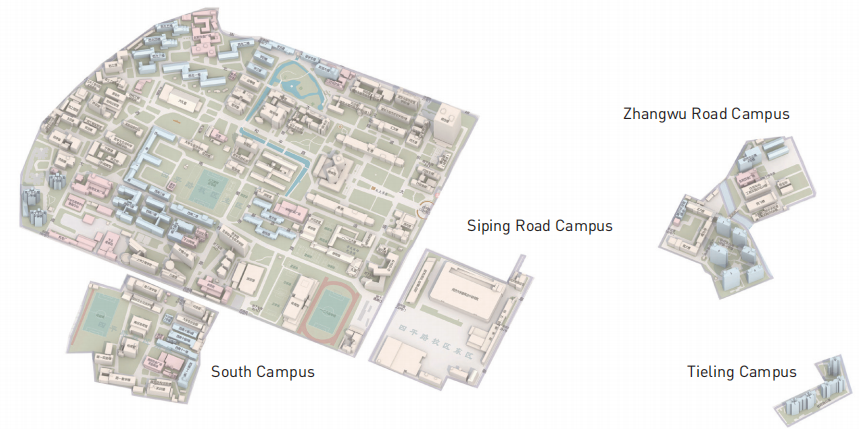
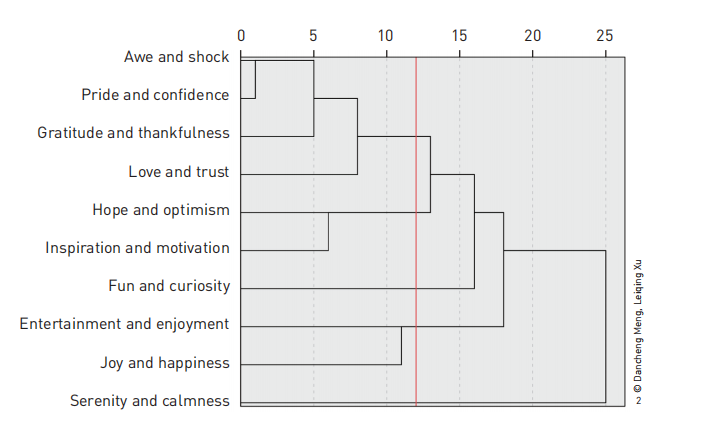
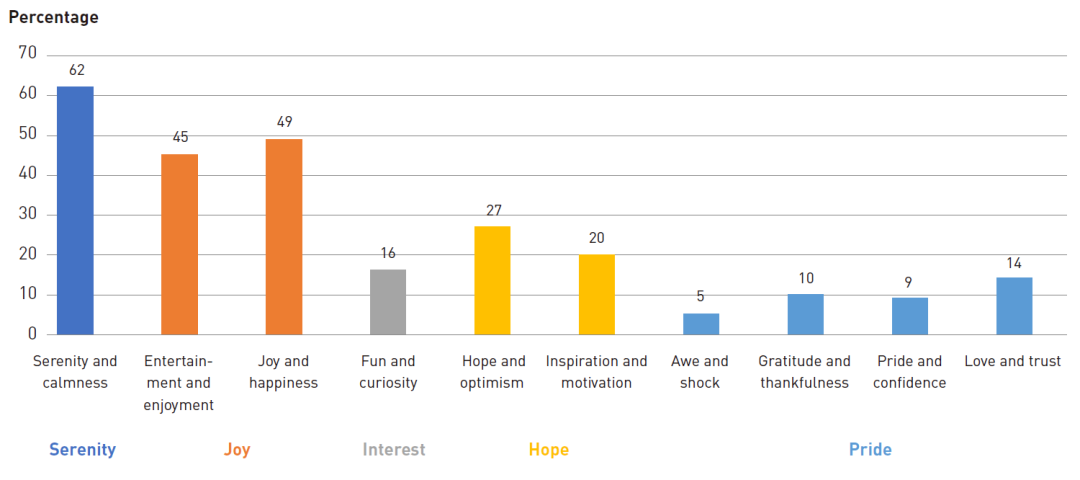
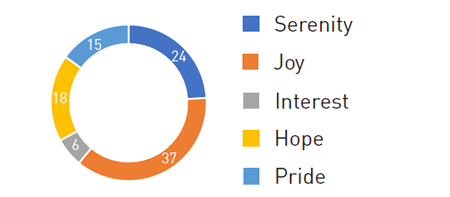
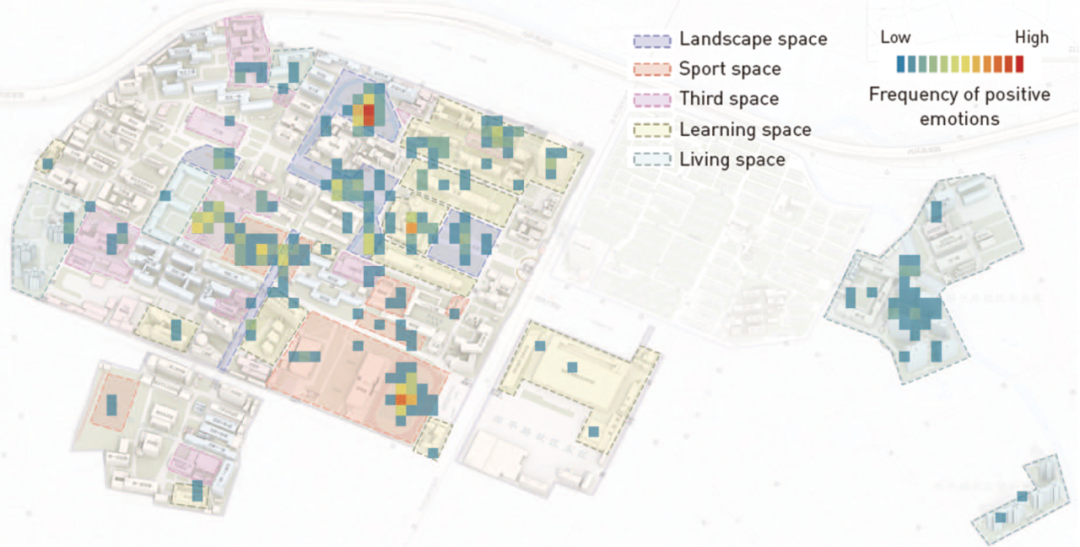
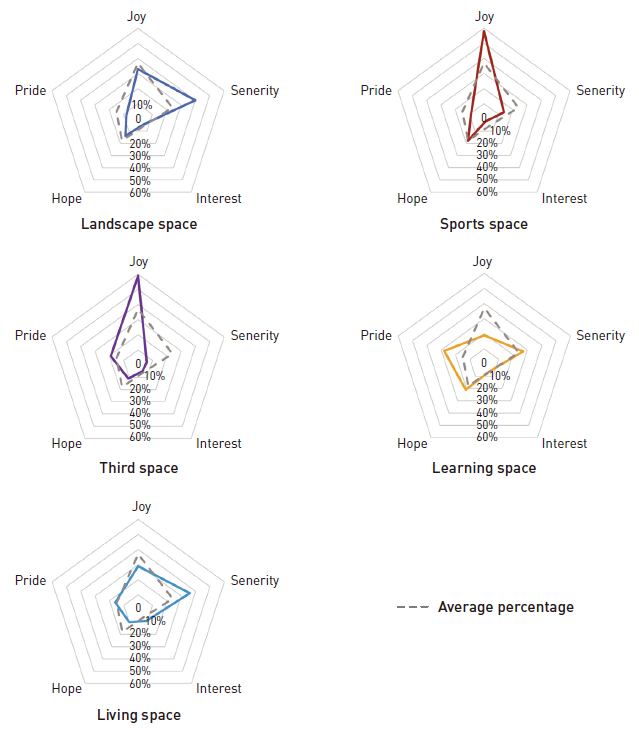
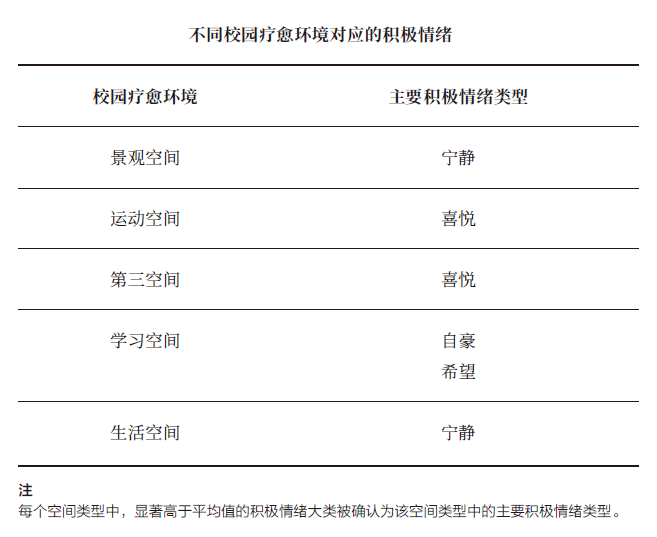
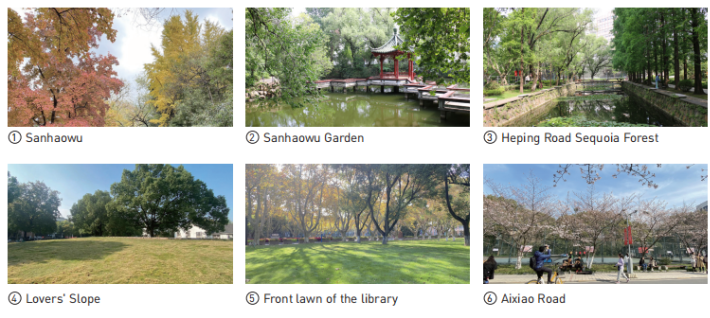
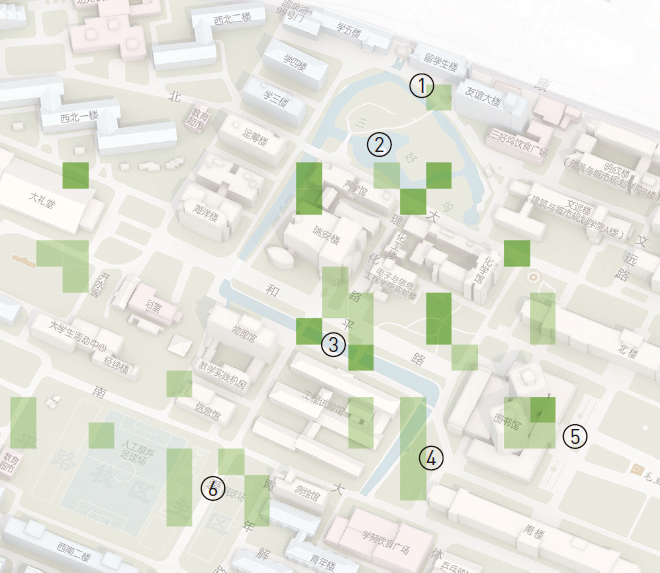
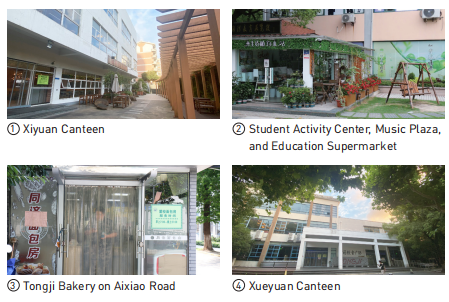
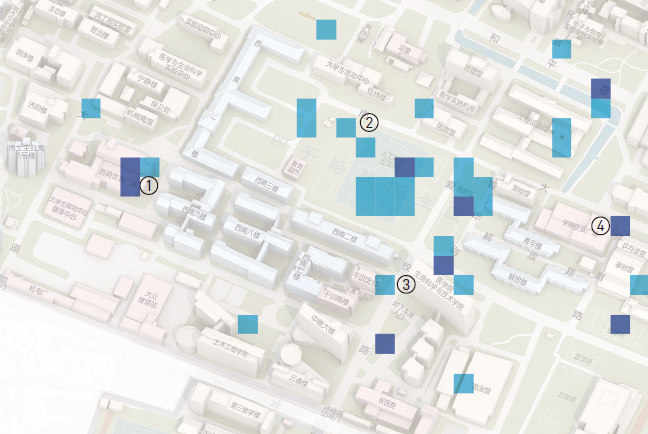
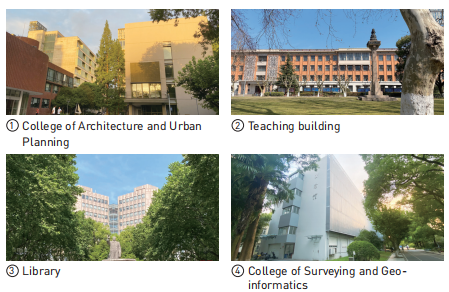
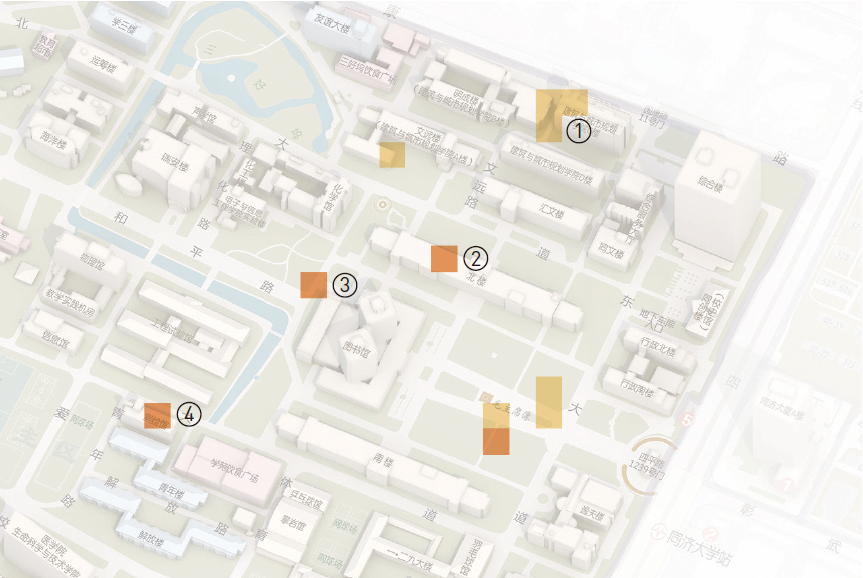
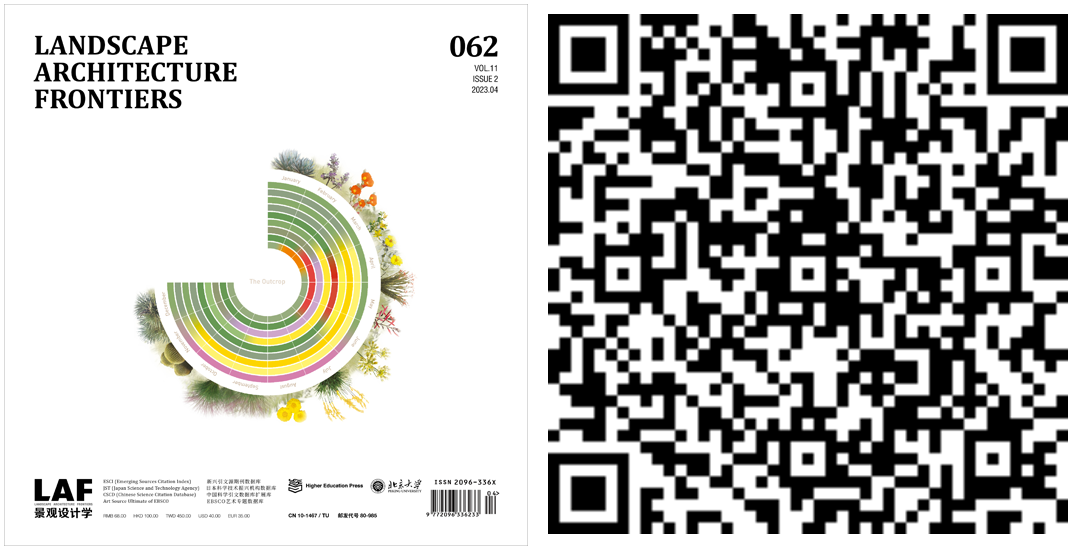

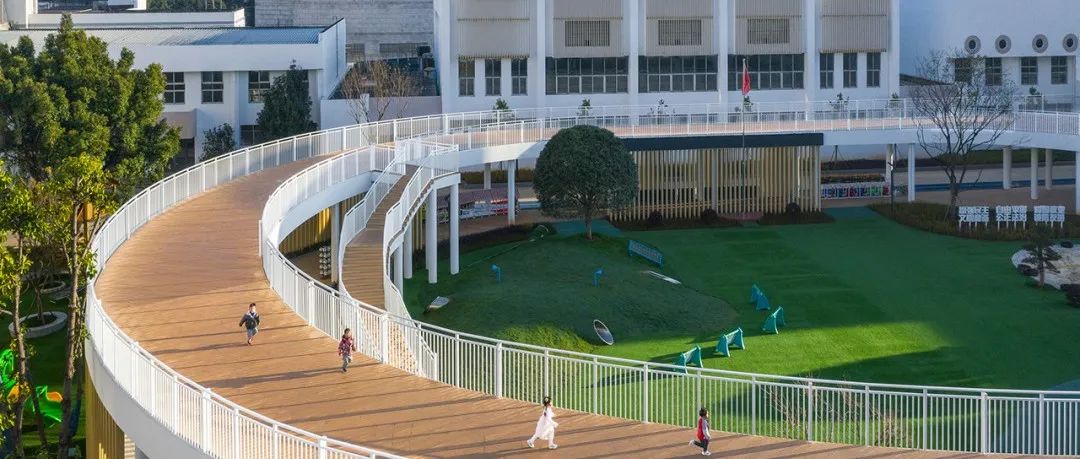
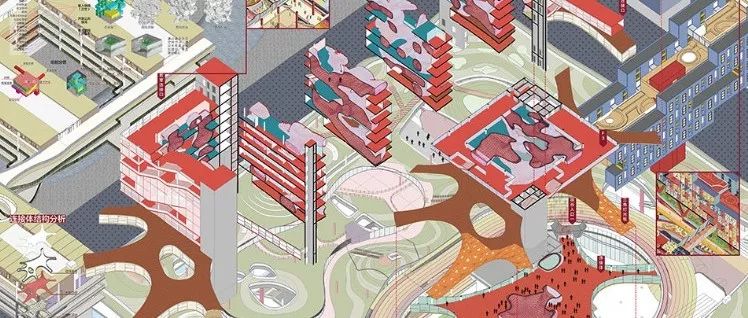
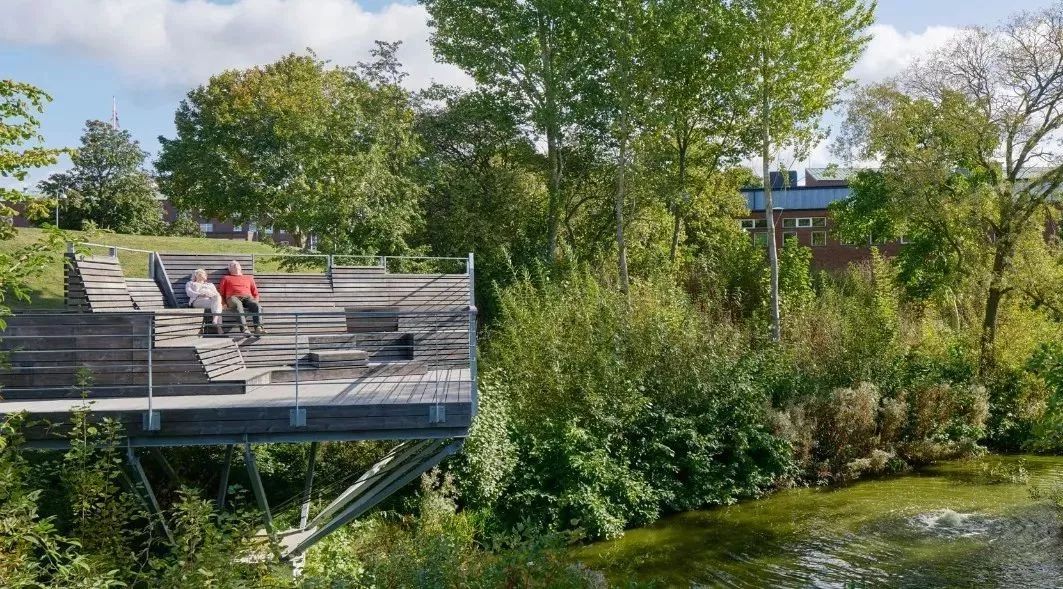
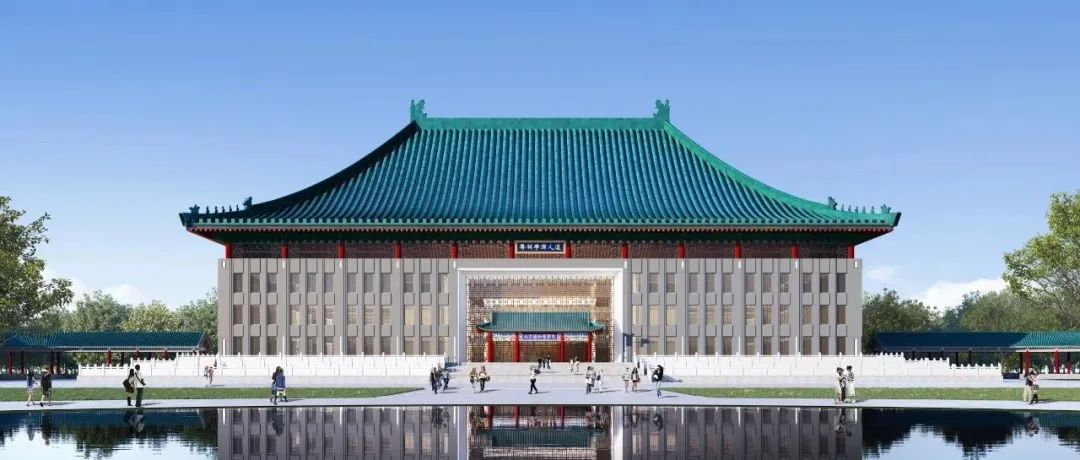

 规划问道
规划问道












